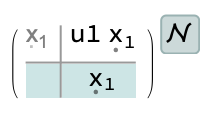I started using Mathematica 12 and ran into difficulties. Namely, I want to compare the results of the calculation of a closed system from Simulink and in Mathematica. I rummaged around a bit on the Internet and found an implementation of nonlinear state spaces. Having written my code, I encountered a difficulty, namely the implementation of integration. Help me to understand. https://reference.wolfram.com/language/ref/NonlinearStateSpaceModel.html
nsys = NonlinearStateSpaceModel[{{u Subscript[x, 2], Subscript[x, 2] == Integral[Subscript[x, 1]]}, {Subscript[x, 2]}}, {Subscript[x, 1], Subscript[x, 2]}, u]
OutputResponse[nsys, Sin[t], {t, 0, 5}];
Plot[%, {t, 0, 5}]





